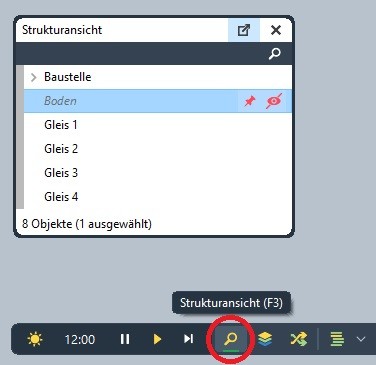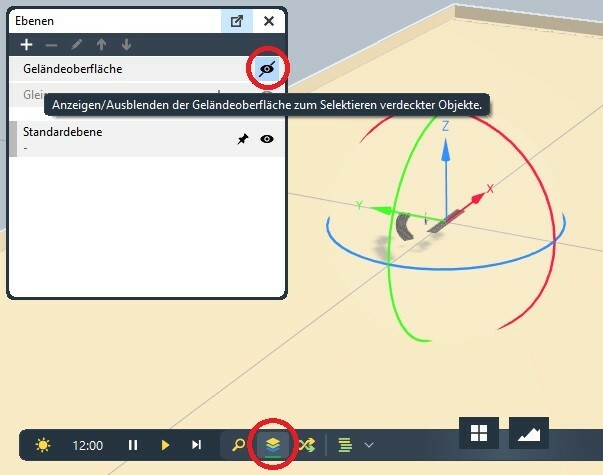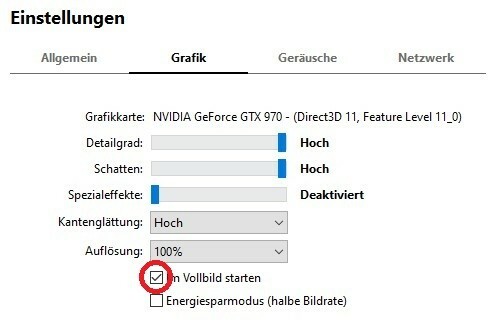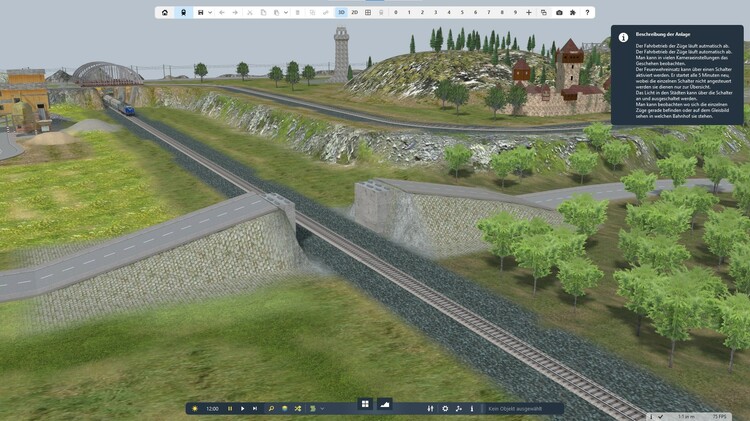-
Gesamte Inhalte
6162 -
Benutzer seit
-
Letzter Besuch
Alle erstellten Inhalte von Goetz
-

Plan in V8 gezeichnet und hochgeladen V7 findet ID nicht.
Goetz antwortete auf robokalles Thema in Technischer Support
Du siehst im V7 Online Katalog keine V8 Anlagen, weil das viel Verwirrung stiften würde. Und weil es Frust brächte, wenn V7 Nutzer eine Liste von Anlagen sähen, die sie nicht öffnen können. -

Plan in V8 gezeichnet und hochgeladen V7 findet ID nicht.
Goetz antwortete auf robokalles Thema in Technischer Support
Du machst nichts falsch, Kalle. Sondern die Anlagendateien sind nur abwärts, aber nicht aufwärts kompatibel. Das heißt: du kannst eine V7 Anlage mit V8 öffnen, aber nicht umgekehrt. Das hat technische Gründe, die ich dir auf Wunsch gerne erkläre. -
Das ist ein sehr schönes und überschaubares Beispiel, Brummi.
-
Ja, weil diese Länder bis zur Wende keine Bundesländer waren. Diese Einordnung ist neu. Und mehr ist damit nicht gemeint.
-

v8: Geländeoberfläche verschwunden.
Goetz antwortete auf TEQUILA-SORAYAs Thema in Fragen zur Planung
Wenn du eins der Objekte unsichtbar machst, kannst du es mit der Maus nicht mehr auswählen. Also bleibt dir nur die Liste, in der alle verbauten Modelle aufgeführt werden, um es wiederzufinden. Du kannst diese Liste übrigens auch nach verschiedenen Kriterien filtern. Sichtbar/unsichtbar ist eins dieser Kriterien. -
aber dazu müsste ich das Fehlverhalten selbst beobachten. Weil ich dann die wahre Ursache identifizieren könnte.
-

v8: Geländeoberfläche verschwunden.
Goetz antwortete auf TEQUILA-SORAYAs Thema in Fragen zur Planung
Falls du die Platte komplett unsichtbar gemacht hast, geh bitte in die Strukturansicht und schalte sie dort wieder sichtbar: Falls nur die Oberfläche unsichtbar ist, öffne bitte das "Ebenen" Menü und schalte sie dort wieder sichtbar: Viele Grüße Götz -
Ich hatte kurz mit dem Gedanken gespielt, deine Anlage näher zu untersuchen. Ich hatte sie sogar schon geöffnet. Aber jetzt müsste ich selbst herausfinden, wo die Probleme auftauchen, von denen du berichtest. Wo zum Beispiel ein Kontakt zu nah an einem Gleis ist, welches bei Betreten etwas auslösen soll. Und da hört meine Hilfsbereitschaft auf. Tut mir leid.
-

Fehlende Möglichkeit V8 Startbildschirm zu schließen wie bei V7
Goetz antwortete auf Balthazar100s Thema in Technischer Support
Danke für den Hinweis, Andy Daran hatte ich nicht gedacht. @Balthazar100 Wenn du den Vollbildmodus in den Grafikeinstellungen deaktivierst, siehst du wieder wie gewohnt die Windows-typische Kopfzeile: -
Das ist der Grund.
-

Fehlende Möglichkeit V8 Startbildschirm zu schließen wie bei V7
Goetz antwortete auf Balthazar100s Thema in Technischer Support
Ja, ist es. Fahr mit dem Mauszeiger in die obere rechte Ecke. Dann kommt das Minimenü mit dem Kreuz etc. Mit Alt+F4 kannst du das Studio auch beenden. Finde ich in der Situation bequemer. -
Hallo Jef, alle Werkzeuge für die Bearbeitung der Bodenplatte findest du jetzt im Menü "Geländegestaltung" Dazu gehört auch das Werkzeug für Tunneldurchbrüche. Viele Grüße Götz
-
Das liegt eventuell an deinen Grafikeinstellungen im 3D-Modellbahn Studio. Wenn du den Detailgrad auf "niedrig" gesetzt hast, schaltet das Studio früher auf eine niedrigere Auflösung um.
-
Herman and streit_ross both beat me to it Still, here's my example: counter variable example.mbp When the signal is set to "clear", I set an object variable with the name "counter" to a value of 3 This object variable is stored in the signal. But any variable - object or module - will do the trick. Upon leaving the contact, I reduce the value in that variable by 1 and every time the variable changes, I write it's value into a text field check if the value is 0 or less and change the state of the signal to "stop" if that's the case. The two second delay before the signal change is for beauty only and not required Kind regards Goetz
-
Und da sagt man: Ein Bild sagt mehr als tausend Worte Was siehst du denn auf dem Bild?
-
Die ja. Aber nicht die Straßenbrücke Stadtstraße, welche FeuerFighter zeigt.
-
Alles klar, @FeuerFighter dann hat sie noch keine Freigabe.
-
In der Vorschau zur Brücke fehl(t)en folgende Infos: Der Erbauer des Modells. Und das Veröffentlichungsdatum. Die ist nicht im Online Katalog. Die hast du selbst in dein Straßensortiment aufgenommen. hier die gewünschte mbp: fehlende Bruecke.mbp mbp ist das Suffix für eine exportierte Anlage. Eine mbe Datei wäre ein Modell. Und genau das haben wir in dem Fall ja nicht
-
Die Brücke fehlt weiterhin. Die ist vermutlich nicht aus dem Online Katalog. Klick mal bitte bei angewählter Brücke auf das i (für info) und schau/zeig uns, woher das Modell ist.
-
Ich habe die Anlage nur geöffnet und mich umgeschaut. Ich habe nichts verändert! Also auch keine Ebene ausgeblendet.
-
Hallo FeuerFighter, Ist das vielleicht eine Eigenkonstruktion? Denn bei mir fehlen Brücken genauso wie beim @schlagerfuzzi1. Viele Grüße Götz
-
... und sieht genauso aus wie die echte Welt da draußen. Links die Nadel-, rechts die Laubbäume. Und Natur wie Infrastruktur gleichermaßen rechtwinklig, geradlinig und exakt nach den vier Himmelsrichtungen ausgerichtet. Verblüffend.
-

Videotutorials auf Yotutbe von mir über die EV
Goetz antwortete auf LP-Trainfans Thema in Allgemeine Diskussionen
Hallo LP-Trainfan, deine Idee weckt in mir den Verdacht, dass du dir zu viel vornimmst. Dass du Mühe hast, mal bei der Sache zu bleiben und eins fertig zu machen, bevor du dir etwas neues vornimmst. Und ich weiß nicht, wie gut du mit der EV vertraut bist. Daher kann ich nicht einschätzen, ob deine Videos interessant wären oder nicht. Viele Grüße Götz -

Plugin "Gleis-Setz-Tools" / "Track-Set-Tools" de/en
Goetz antwortete auf EASYs Thema in Erweiterungen (Plugins)
-
Statt die erste Lok zu benutzen, die du findest, könntest du jede Position, auf der eine Lok bereit steht, in eine Liste übertragen. Und dann anschließend per Zufallszahl ein Element aus der Liste verwenden. Um die Liste zu erstellen, wirst du aber nicht um Lua herum kommen. Und ich weiß gerade nicht, ob das für dich okay ist.










